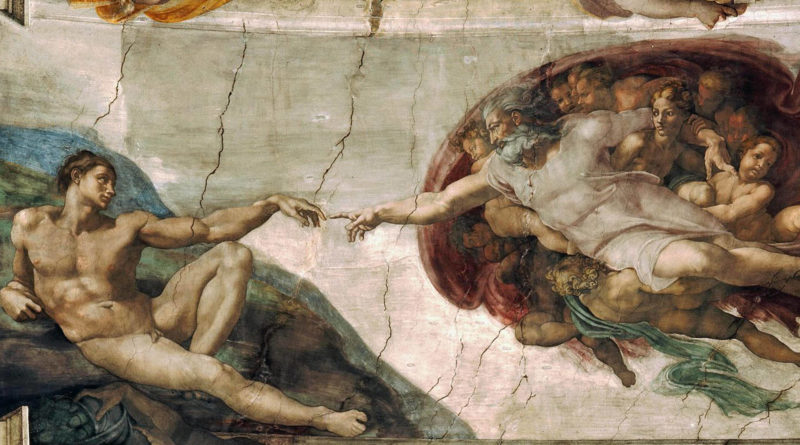Rome trip: Sistine Chapel
During our visit to Rome, students took on the role of tour guides. Each student introduced a specific monument to the group, focusing on three key areas:
- The history of the monument
- The monument’s relevance today (its influence on current culture, language, architecture, etc.)
- A fun fact or an interesting story
In this blog post, we share Vadim’s take on the Sistine Chapel.
The Sistine Chapel
The Sistine Chapel (Italian: Cappella Sistina) is a church in the Vatican, where the conclave meets to elect the Pope. The attraction is famous for the magnificent frescoes of the great Michelangelo Buonarotti.
It was built between 1473 and 1483 in honor of Pope Sixtus IV. The structure appeared on the site where the “Great Chapel” existed, in which the papal court, consisting of about two hundred people (cardinals, representatives of various religious orders, and noble families), gathered. Sixtus IV was very afraid of the military threat from the Florentine Medici clan and the Sultan of the Ottoman Empire Mehmed II, with whom he did not have a good relationship. The Sistine Chapel was conceived as a defensive structure but also served as a house church for the popes.
The chapel is rectangular in shape and follows the exact dimensions of Solomon’s Temple as stated in the Old Testament—40.9 meters long and 13.4 meters wide. The first floor is very strong and solid, with thick and high walls characteristic of defensive structures of those times. On the second floor, we see lancet windows, thanks to the size of which there is always enough air and light inside the chapel. The third floor was a guardhouse, so instead of windows, there are many loopholes that served as openings for firing at targets.
The famous paintings of the Sistine Chapel are its soul. They bear the footprint of three Renaissance giants—Raphael, Botticelli, and Michelangelo (not the turtle). These are invaluable gifts left to us as an inheritance.
In 1481, a group of masters led by Botticelli arrived in Rome. The group consisted of four artists: Domenico Ghirlandaio, Cosimo Rosselli, Pietro Perugino, and Botticelli himself, along with several assistants. Their task was to paint the walls of the papal church with frescoes drawing a parallel between the stories of Moses and Jesus Christ, as a connection between the Old and New Testaments. The work lasted a year, resulting in 16 paintings, 4 of which have not survived to this day for certain reasons.
Ceiling and The Last Judgment by Michelangelo
In 1504, excavations were carried out near the Sistine Chapel. As a result, the ceiling of the papal house church was severely damaged and covered with cracks. Reconstruction began, which led to the need to update the ceiling painting (at that time, it depicted sparkling stars in the night sky). However, the reigning Pope Julius II had a different idea.
In April 1508, Michelangelo signed an agreement with the Pope and began work. The area above the portraits of popes and the triangles above the windows are dedicated to the theme of earthly man and the ancestors of Christ. This is the so-called lower belt of the arch. Above, we see images of prophets and sibyls (in ancient culture, soothsayers who often predicted disasters), who had a special understanding of the divine and predicted the coming of the Savior. This is the middle belt of the arch.
The center of the ceiling is the largest work, which includes 9 episodes from the Book of Genesis, from the creation of the world to the intoxication of Noah. These scenes are grouped into three groups and reveal three main themes:
- Creation of Heaven and Earth
- Adam and Eve
- The Story of Noah
In the corners of the chapel, we can see Old Testament stories of the salvation of the people of Israel.
Michelangelo finished these frescoes in 1511. After 25 years, he returned to the same chapel to show the world another of his priceless masterpieces—the huge wall fresco “The Last Judgment,” exposing all the vices and weaknesses of man. This large-scale work occupies the entire wall behind the altar.
Conventionally, it is divided into three parts:
- The upper part features angels with the attributes of the Passion of Christ.
- The central part depicts Christ and the Virgin Mary between the blessed.
- The lower part shows the end of the world: angels playing the trumpets of the Apocalypse, the resurrection of the dead, the ascension of the saved to heaven, and the casting of sinners into hell.
In this masterpiece, Michelangelo depicted a little over 400 characters, the central figure among which is, of course, the Savior himself. There are surviving eyewitness accounts that when Pope Paul III saw the final, completed version of the painting, he was so amazed that he fell to his knees and began to pray fervently.




